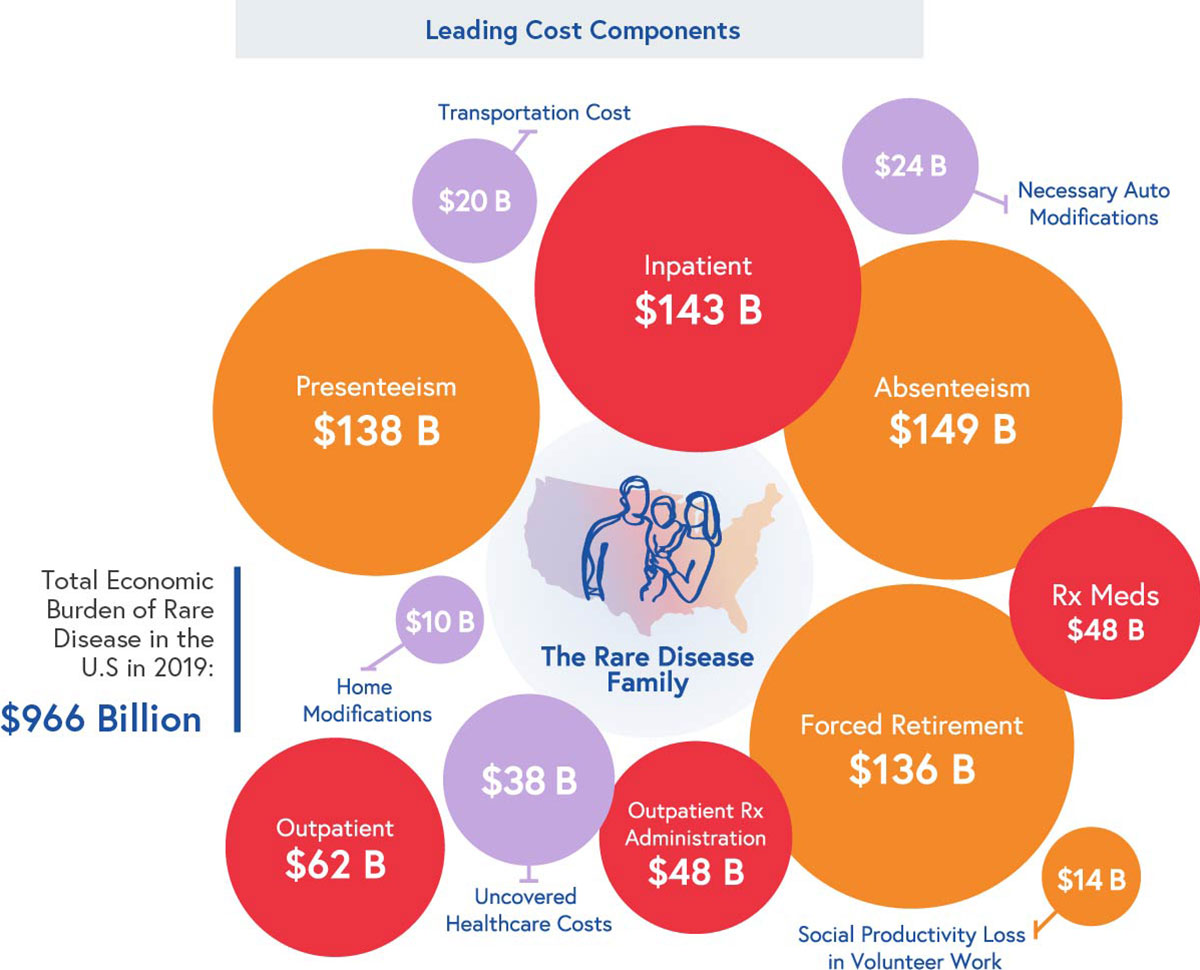New data is shedding light on a public health crisis — the cost of suffering from a rare disease.
“What is the cost of rare disease to you?” We posed this question to the national rare disease community — patients and caregivers — while conducting the recent National Economic Burden of Rare Disease Study, the most comprehensive assessment of the total cost of rare diseases in the United States to date. The answer? In 2019 alone, the cost was nearly $1 trillion for just 379 rare diseases.
This estimate surpasses the economic impact estimated for many of the costliest chronic diseases described by the Centers for Disease Control and Prevention (CDC), including diabetes, heart disease, and cancer. To generate the data for this study, we identified both direct medical costs, via an analysis of claims data, and indirect and non-medical costs, via a survey of 1,399 members of the rare disease community.
But it wasn’t the overall findings that were the most breathtaking. The data revealed indirect and non-medical costs — costs absorbed directly by families — to be the highest driver at $548 billion. This includes life-saving medical treatments prescribed by physicians but not covered by insurance, home and vehicle modifications to accommodate physical needs, durable medical equipment, personal caregiver costs, lost productivity costs due to forced retirement or absenteeism, and more. Direct medical costs — including expenditures for inpatient hospital or outpatient care, physician visits, prescription medications, and durable medical equipment — reflected about 40 percent of the overall cost impact at $418 billion.
In addition to costs, the research captured the long diagnostic journey facing patients and families. According to the survey, patients endure an average of 6.3 years of diagnostic testing, hospitalizations, emergency room visits, and specialist referrals before receiving a confirmed diagnosis of their rare disease, often having received several incorrect diagnoses during that time.
The data is growing
Since our findings were released, three more studies from a variety of authors have been published which shed new light on the collective economic cost impacts of rare diseases, disorders, and conditions that affect between 25 to 30 million people in the United States. While each study was constructed differently, significant commonalities exist between them in terms of certain data sources, approaches, and, importantly, conclusions.
We joined key stakeholders from the studies to identify specific and actionable solutions that can, if implemented, more fully capture the complete medical and economic impacts of rare diseases and improve our ability to meet the needs of this population.
These solutions include increasing the number of diagnostic codes for rare diseases, enhancing the collection of rare disease patient data, expanding patient access to advanced diagnostic tools, supporting natural history studies and patient registries, and improving electronic health record structure.

What you can do
Thanks to the powerful engagement of the community, this growing set of data show what we have long known: rare diseases present a public health crisis and demand additional research funding; enhanced awareness; and improved access to diagnosis, care, and treatment. The EveryLife Foundation remains committed to working alongside the community to advance policies that will address this urgent need.
The findings of these studies call for attention from researchers, policymakers, healthcare providers, and employers. We encourage all stakeholders in the rare disease community to advocate for these and other policy changes that can help change the landscape of rare disease. Here are a few ways you can help:
- Share these findings with your members of Congress and urge them to support rare disease appropriations priorities.
- Learn more about advocacy, why it is important, and how to make your voice heard using resources provided by the Rare Disease Legislative Advocates (RDLA) and other patient organizations.
- Participate in patient registries, natural history studies, and other projects that will continue to build data sets that will inform research agenda and benefit all rare disease stakeholders.
Find out more about the policies impacting the rare disease community and how to take action at EveryLifeFoundation.org.



